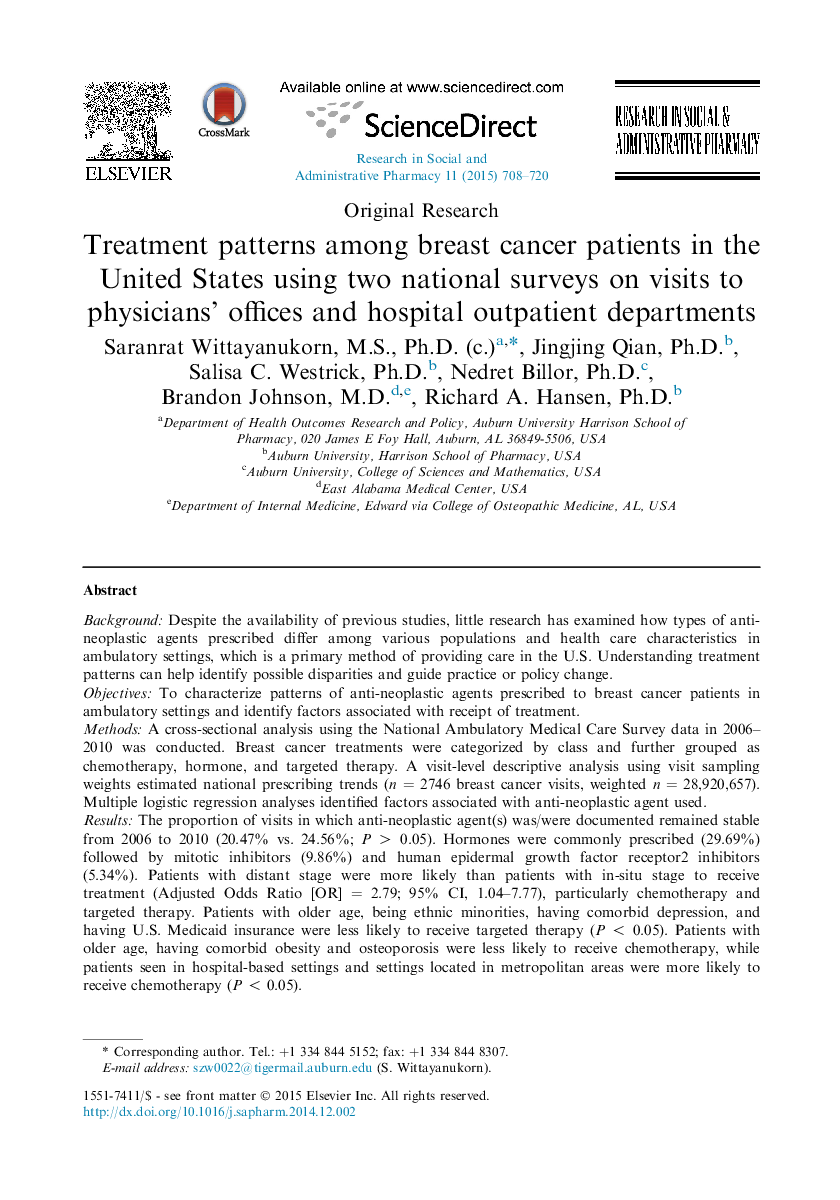| Article ID | Journal | Published Year | Pages | File Type |
|---|---|---|---|---|
| 2508291 | Research in Social and Administrative Pharmacy | 2015 | 13 Pages |
BackgroundDespite the availability of previous studies, little research has examined how types of anti-neoplastic agents prescribed differ among various populations and health care characteristics in ambulatory settings, which is a primary method of providing care in the U.S. Understanding treatment patterns can help identify possible disparities and guide practice or policy change.ObjectivesTo characterize patterns of anti-neoplastic agents prescribed to breast cancer patients in ambulatory settings and identify factors associated with receipt of treatment.MethodsA cross-sectional analysis using the National Ambulatory Medical Care Survey data in 2006–2010 was conducted. Breast cancer treatments were categorized by class and further grouped as chemotherapy, hormone, and targeted therapy. A visit-level descriptive analysis using visit sampling weights estimated national prescribing trends (n = 2746 breast cancer visits, weighted n = 28,920,657). Multiple logistic regression analyses identified factors associated with anti-neoplastic agent used.ResultsThe proportion of visits in which anti-neoplastic agent(s) was/were documented remained stable from 2006 to 2010 (20.47% vs. 24.56%; P > 0.05). Hormones were commonly prescribed (29.69%) followed by mitotic inhibitors (9.86%) and human epidermal growth factor receptor2 inhibitors (5.34%). Patients with distant stage were more likely than patients with in-situ stage to receive treatment (Adjusted Odds Ratio [OR] = 2.79; 95% CI, 1.04–7.77), particularly chemotherapy and targeted therapy. Patients with older age, being ethnic minorities, having comorbid depression, and having U.S. Medicaid insurance were less likely to receive targeted therapy (P < 0.05). Patients with older age, having comorbid obesity and osteoporosis were less likely to receive chemotherapy, while patients seen in hospital-based settings and settings located in metropolitan areas were more likely to receive chemotherapy (P < 0.05).ConclusionsAnti-neoplastic treatment patterns differ among breast cancer patients treated in ambulatory settings. Factors predicting treatment include certain socio-demographics, cancer stages, comorbidities, metropolitan areas, and setting.
